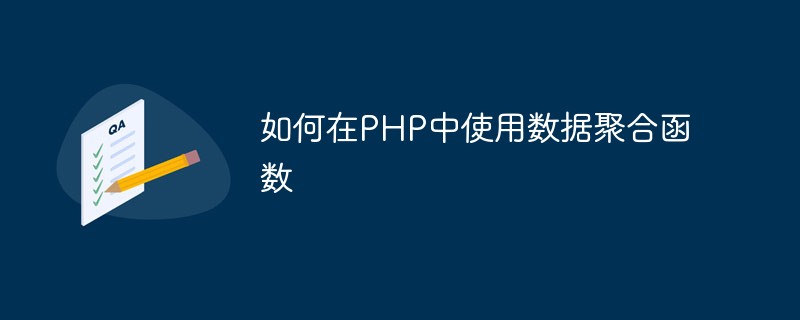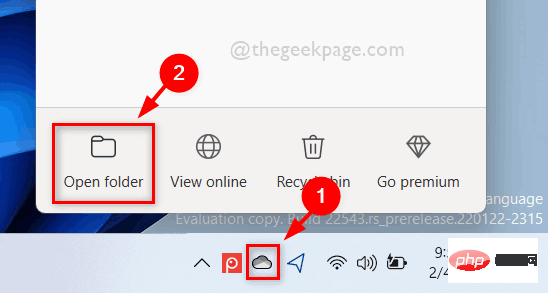In today's social era, users are no longer satisfied with the traditional registration and login methods, and hope to log in directly using their already registered social accounts. In order to meet this demand, many websites provide third-party login access. In PHP, we can implement third-party authorized login through the OAuth protocol. Let us take a look at it below.
The OAuth protocol is an open standard, mainly used to authorize access to third-party platforms without providing the user's account number and password. Through the OAuth protocol, third-party platforms can request data from other platforms on behalf of users, realizing data sharing between different platforms.
In PHP, there are generally the following steps to implement OAuth authorization login:
- Apply for the API key and key string of the third-party platform
Before performing OAuth authorization login, you need to apply for the API key and key string on the third-party platform. Taking Sina Weibo as an example, we need to apply for an API key and key string on the Sina Open Platform. After the application is successful, we can get the following information:
App Key: The unique identifier of the application
App Secret: The secret key of the application
Redirect URI: The URI used for callback, which needs to be filled in when applying Consistent
- Implementing OAuth client
In PHP, we can use a third-party OAuth client to quickly implement the authorized login function. Here we take Github as an example to introduce how to use a third-party OAuth client. Here we will use PHP League's OAuth2 Client to implement Github authorized login.
First, we need to install the PHP League's OAuth2 Client library in the project, which can be installed using composer:
composer require league/oauth2-client
After the installation is complete, we need to instantiate Github's OAuth client in the code , and pass in the API key and key string applied in the previous step.
$provider = new LeagueOAuth2ClientProviderGithub([
'clientId' => 'CLIENT_ID',
'clientSecret' => 'CLIENT_SECRET',
'redirectUri' => 'REDIRECT_URI',
'scopes' => ['user'],
]);Among them, CLIENT_ID and CLIENT_SECRET are the API key and key string applied in the previous step, and REDIRECT_URI is the callback URI.
- Get the authorization code
Before OAuth authorization login, you need to send a request to the third-party platform to obtain the authorization code. Taking Github as an example, we can use the following code to redirect users to the Github authentication page:
// Step 1. Get authorization code
$options = [
'state' => 'OPTIONAL_CUSTOM_CONFIGURED_STATE',
// ...
];
$authUrl = $provider->getAuthorizationUrl($options);
// Store state so that the callback can verify the response
$_SESSION['oauth2state'] = $provider->getState();
// Redirect the user to the authorization URL
header('Location: '.$authUrl);
exit;When requesting the Github authentication page, we pass an $options array to specify the scope of authorization and other information. $_SESSION['oauth2state'] is used to save the returned state value.
- Get access token
After the user passes third-party authentication, we need to obtain the access token through the callback URI. Taking Github as an example, we can use the following code to obtain the access token:
// Step 2. Get an access token using the authorization code grant
if (isset($_GET['code']) && isset($_GET['state'])) {
if ($_GET['state'] !== $_SESSION['oauth2state']) {
unset($_SESSION['oauth2state']);
exit('State error');
}
// Get an access token using the authorization code grant
try {
$token = $provider->getAccessToken('authorization_code', [
'code' => $_GET['code']
]);
// Optional: Store the token
$_SESSION['access_token'] = $token->getToken();
} catch (LeagueOAuth2ClientProviderExceptionIdentityProviderException $e) {
exit('Token error: '.$e->getMessage());
}
header('Location: '.$_SERVER['PHP_SELF']);
exit;
}After obtaining the access token, we can store the token in SESSION for subsequent use.
- Get user information
After obtaining the access token, we can obtain user information through the OAuth client. Taking Github as an example, we can use the following code to obtain user information:
if (isset($_SESSION['access_token'])) {
$token = new LeagueOAuth2ClientTokenAccessToken(['access_token' => $_SESSION['access_token']]);
try {
$user = $provider->getResourceOwner($token);
echo 'Hello '.$user->getName();
} catch (LeagueOAuth2ClientProviderExceptionIdentityProviderException $e) {
exit('Resource owner error: '.$e->getMessage());
}
}After obtaining the user information, we can process it according to needs, such as registration, login, personalization and other operations.
The above is the basic process for implementing third-party authorized login in PHP. Of course, in practical applications, many security and business issues need to be considered, such as preventing CSRF attacks, synchronizing user data, etc. However, through the above basic process, I believe readers can have a deeper understanding of OAuth authorized login.
The above is the detailed content of How to use third-party authorization to log in in PHP?. For more information, please follow other related articles on the PHP Chinese website!
 如何在Go中使用命名管道?May 11, 2023 pm 04:22 PM
如何在Go中使用命名管道?May 11, 2023 pm 04:22 PM命名管道是一种在操作系统中相对比较低级的进程通信方式,它是一种以文件为中介的进程通信方式。在Go语言中,通过os包提供了对命名管道的支持。在本文中,我们将介绍如何在Go中使用命名管道来实现进程间通信。一、命名管道的概念命名管道是一种特殊的文件,可以被多个进程同时访问。在Linux系统中,命名管道是一种特殊的文件类型,它们存在于文件系统的某个位置上,并且可以在
 如何在Go中使用第三方库?May 11, 2023 pm 03:30 PM
如何在Go中使用第三方库?May 11, 2023 pm 03:30 PM在Go语言中,使用第三方库是非常方便的。许多优秀的第三方库和框架可以帮助我们快速地开发应用程序,同时也减少了我们自己编写代码的工作量。但是如何正确地使用第三方库,确保其稳定性和可靠性,是我们必须了解的一个问题。本文将从以下几个方面介绍如何使用第三方库,并结合具体例子进行讲解。一、第三方库的获取Go语言中获取第三方库有以下两种方式:1.使用goget命令首先
 如何在PHP中使用协程?May 12, 2023 am 08:10 AM
如何在PHP中使用协程?May 12, 2023 am 08:10 AM随着传统的多线程模型在高并发场景下的性能瓶颈,协程成为了PHP编程领域的热门话题。协程是一种轻量级的线程,能够在单线程中实现多任务的并发执行。在PHP的语言生态中,协程得到了广泛的应用,比如Swoole、Workerman等框架就提供了对协程的支持。那么,如何在PHP中使用协程呢?本文将介绍一些基本的使用方法以及常见的注意事项,帮助读者了解协程的运作原理,以
 如何在PHP中使用变量函数May 18, 2023 pm 03:52 PM
如何在PHP中使用变量函数May 18, 2023 pm 03:52 PM变量函数是指可以使用变量来调用函数的一种特殊语法。在PHP中,变量函数是非常有用的,因为它可以让我们更加灵活地使用函数。在本文中,我们将介绍如何在PHP中使用变量函数。定义变量函数在PHP中,变量函数的定义方式非常简单,只需要将要调用的函数名赋值给一个变量即可。例如,下面的代码定义了一个变量函数:$func='var_dump';这里将var_dump函
 如何在PHP中使用数据聚合函数May 18, 2023 pm 02:51 PM
如何在PHP中使用数据聚合函数May 18, 2023 pm 02:51 PM数据聚合函数是一种用于处理数据库表中多行数据的函数。在PHP中使用数据聚合函数可以使得我们方便地进行数据分析和处理,例如求和、平均数、最大值、最小值等。下面将介绍如何在PHP中使用数据聚合函数。一、介绍常用的数据聚合函数COUNT():计算某一列的行数。SUM():计算某一列的总和。AVG():计算某一列的平均值。MAX():取出某一列的最大值。MIN():
 如何在 Windows 11 中按需使用 OneDrive 的文件Apr 14, 2023 pm 12:34 PM
如何在 Windows 11 中按需使用 OneDrive 的文件Apr 14, 2023 pm 12:34 PM<p>Windows 系统上的 OneDrive 应用程序允许您将文件存储在高达 5 GB 的云上。OneDrive 应用程序中还有另一个功能,它允许用户选择一个选项,是将文件保留在系统空间上还是在线提供,而不占用您的系统存储空间。此功能称为按需文件。在这篇文章中,我们进一步探索了此功能,并解释了有关如何在 Windows 11 电脑上的 OneDrive 中按需使用文件的各种选项。</p><h2>如何使用 On
 如何在Go中使用音频处理?May 11, 2023 pm 04:37 PM
如何在Go中使用音频处理?May 11, 2023 pm 04:37 PM随着音频处理在各种应用场景中的普及,越来越多的程序员开始使用Go编写音频处理程序。Go语言作为一种现代化的编程语言,具有优秀的并发性和高效率的特点,使用它进行音频处理十分方便。本文将介绍如何在Go中使用音频处理技术,包括读取、写入、处理和分析音频数据等方面的内容。一、读取音频数据在Go中读取音频数据有多种方式。其中比较常用的是使用第三方库进行读取,比如go-
 如何在Go中使用WebSocket?May 11, 2023 pm 04:17 PM
如何在Go中使用WebSocket?May 11, 2023 pm 04:17 PM近年来,WebSocket技术已经成为了Web开发中不可或缺的一部分。WebSocket是一种在单个TCP连接上进行全双工通信的协议,它使得客户端和服务器之间的通信更加流畅和高效。如今,很多现代的Web应用程序都使用了WebSocket技术,例如实时聊天、在线游戏以及实时数据可视化等。Go语言作为一个现代的编程语言,自然也提供了很好的支持WebSock


Hot AI Tools

Undresser.AI Undress
AI-powered app for creating realistic nude photos

AI Clothes Remover
Online AI tool for removing clothes from photos.

Undress AI Tool
Undress images for free

Clothoff.io
AI clothes remover

AI Hentai Generator
Generate AI Hentai for free.

Hot Article

Hot Tools

mPDF
mPDF is a PHP library that can generate PDF files from UTF-8 encoded HTML. The original author, Ian Back, wrote mPDF to output PDF files "on the fly" from his website and handle different languages. It is slower than original scripts like HTML2FPDF and produces larger files when using Unicode fonts, but supports CSS styles etc. and has a lot of enhancements. Supports almost all languages, including RTL (Arabic and Hebrew) and CJK (Chinese, Japanese and Korean). Supports nested block-level elements (such as P, DIV),

Notepad++7.3.1
Easy-to-use and free code editor

SAP NetWeaver Server Adapter for Eclipse
Integrate Eclipse with SAP NetWeaver application server.

VSCode Windows 64-bit Download
A free and powerful IDE editor launched by Microsoft

DVWA
Damn Vulnerable Web App (DVWA) is a PHP/MySQL web application that is very vulnerable. Its main goals are to be an aid for security professionals to test their skills and tools in a legal environment, to help web developers better understand the process of securing web applications, and to help teachers/students teach/learn in a classroom environment Web application security. The goal of DVWA is to practice some of the most common web vulnerabilities through a simple and straightforward interface, with varying degrees of difficulty. Please note that this software






